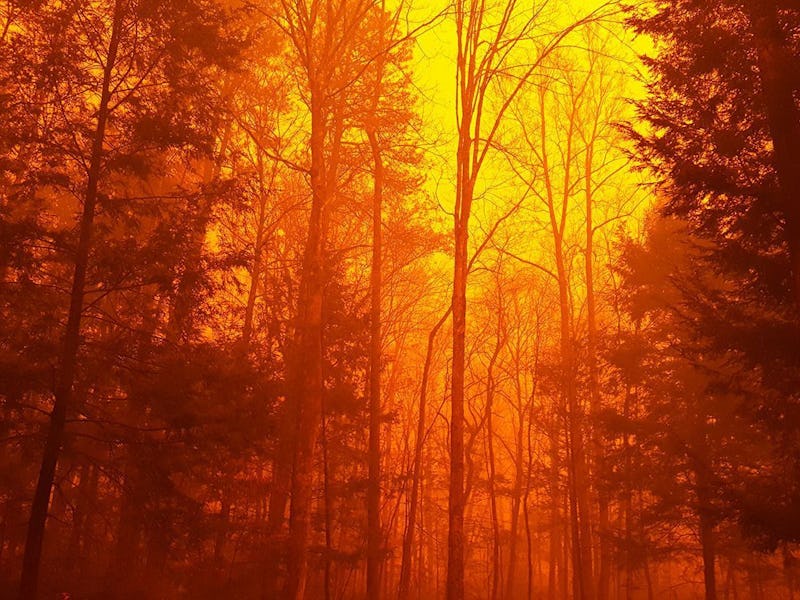Drought and Arson Turned the Southeast into Southern California
Conditions are perfect for massive, destructive wildfires.

More than 150,000 acres have burned, at least eleven people were killed, and more than 700 structures were destroyed — in the South. Those numbers wouldn’t be out of place in a major fire season in Southern California or Arizona, but they’re highly irregular in the Southeast United States. The 14 large fires currently burning in Georgia, North Carolina, Tennessee, Virginia, and Alabama are raging on a scale more commonly seen out West thanks to a convergence of fire-friendly conditions.
Three factors influence fire behavior: weather, terrain, and fuel. California is warm and dry, with hills and canyons that speed up winds and push fire through highly flammable brush called chaparral. Several years of drought have exacerbated the problem, leading to some of the largest and costliest fires in the state’s history.
In the Southeast, the weather in summer and fall may be warm, but it’s also typically humid. A high relative humidity keeps vegetation from drying out enough to fuel a large fire. What fires do start typically stay small and don’t put off much smoke. But drought changes all that.
A view from NASA's Terra satellite of the fires burning on November 7.
The Southeast’s drought started in May, and rain has been scarce even into the fall. Gatlinburg, Tennessee, for example, got about an inch of rain Tuesday and Wednesday, which was their first significant rainfall since October 21. Some areas have had record-breaking stretches without rain, in some cases as long as two months. It’s hard to say if this specific drought is a direct result of climate change, but the region’s higher temperatures are probably related to climate change.
Long periods with low humidity and no rainfall have dried out the fallen leaves littering forest floors in places like the Great Smoky Mountains. That means there’s plenty of dry fuel in hilly places. Fire moves quickly up hills because fire preheats fuel uphill from it, and valleys can create natural chimneys, just like in the hills of Southern California.
A home destroyed by the wildfire that swept through Gatlinburg, Tennessee.
But how did these fires get started in the first place? In some places, lightning sparks most wildfires. The fires in the Southeast have a different source: people. Several people have been arrested for starting fires in throughout the Southeast, including an aspiring weather forecaster who wanted more views on his Facebook videos. Most of the fires are still under investigation, so exact explanations for many of the fires haven’t been released yet. It’s hard to know if this year’s number of arson-related fires is higher than normal, but their severity is certainly worse thanks to the drought and fuel availability.